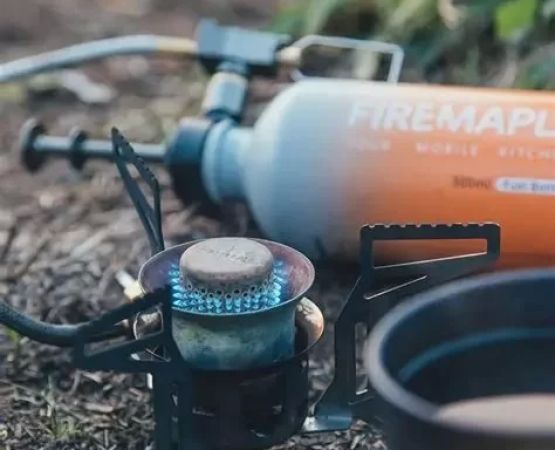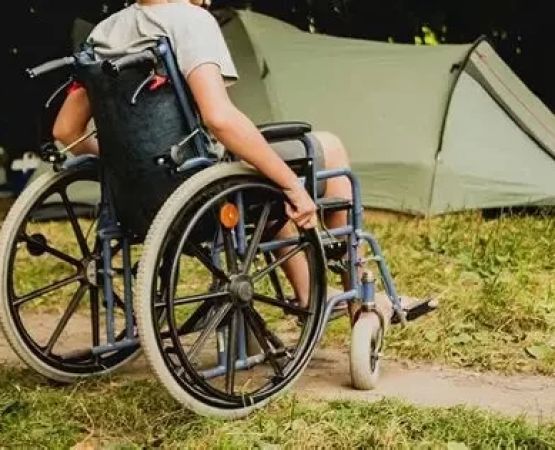- 1. Why Choosing the Right Sleeping Pad Matters
- 2. Types of Sleeping Pads for Multi-Day Trips
- 3. Key Factors to Consider When Choosing a Sleeping Pad
- 4. Common Mistakes to Avoid When Choosing a Sleeping Pad
- 5. Our Recommendations for Top Sleeping Pads
1. Why Choosing the Right Sleeping Pad Matters
When embarking on a multi-day trip, whether it's hiking, backpacking, or camping, your sleeping pad can make or break your experience. It’s one of the key components of your outdoor gear that directly impacts the quality of your rest and your overall comfort. After all, a good night’s sleep can make all the difference in your energy levels and mood for the following day’s adventures.
Choosing the right sleeping pad for multi-day trips ensures that you wake up rested and ready to tackle the day ahead. A poor-quality pad can leave you with aches, insufficient insulation, or even a sleepless night in the wilderness, leading to discomfort or fatigue. Therefore, it's essential to carefully evaluate your options before hitting the trail.
2. Types of Sleeping Pads for Multi-Day Trips
When it comes to sleeping pads for multi-day trips, there are three main types to choose from: inflatable, self-inflating, and closed-cell foam pads. Each type has its unique advantages and drawbacks depending on your needs, trip length, and preferences.
Inflatable Sleeping Pads
Inflatable sleeping pads are popular among backpackers and campers because they offer excellent comfort and insulation with relatively low weight. They are typically made from durable materials like nylon or polyester and feature an air bladder that provides cushioning and support. When inflated, they provide a high level of comfort and can be adjusted to your preferred firmness.
Inflatable pads are compact and lightweight, making them easy to pack for multi-day trips. However, they do require inflation, and some models may be prone to punctures. Many inflatable sleeping pads come with an insulated version, which helps to retain warmth during cold nights.
Self-Inflating Sleeping Pads
Self-inflating sleeping pads combine the best features of foam and air pads. They have a foam core that automatically expands when the valve is opened, making them easy to set up. While they provide comfort and insulation, they tend to be heavier and bulkier than inflatable options.
These pads are a great choice for those looking for more insulation and comfort without the hassle of manually inflating the pad. However, they can be more difficult to pack due to their size, and the foam can lose its loft over time.
Closed-Cell Foam Pads
Closed-cell foam pads are the simplest and most durable option. They are made from solid foam and provide excellent insulation against the cold ground. While they are not as comfortable as inflatable or self-inflating pads, they are virtually indestructible and lightweight.
These pads are ideal for situations where weight and durability are more important than comfort, such as during extreme weather or off-trail hiking. However, they do not offer the same level of cushioning, so they may not be the best choice for those seeking maximum comfort for sleeping.
3. Key Factors to Consider When Choosing a Sleeping Pad
When selecting a sleeping pad for multi-day trips, it’s essential to consider several factors to ensure it meets your needs. Here are the key aspects to keep in mind:
Weight and Packability
For multi-day trips, weight and packability are crucial. Every ounce counts when you’re hiking long distances, so it’s important to choose a sleeping pad that offers a good balance between comfort and portability. Inflatable pads tend to be the lightest and most compact, but self-inflating and foam pads may offer more durability for rugged adventures.
Insulation and R-Value
The R-value of a sleeping pad indicates its ability to insulate you from the cold ground. The higher the R-value, the better the insulation. For colder conditions, a higher R-value (around 4-6) is necessary, while a lower R-value (around 1-3) may suffice for warmer weather. Be sure to choose a sleeping pad with an appropriate R-value based on the season and conditions you’ll be encountering.
Comfort
Comfort is a subjective factor, but it’s still important to consider. Inflatable pads generally offer superior comfort, as they can be adjusted for firmness. Self-inflating pads are a good middle ground, while foam pads may feel firmer and less cushioned. If comfort is your top priority, look for pads that provide ample thickness and cushioning for restful sleep.
Durability
Durability is essential for multi-day trips, where your gear is exposed to the elements and rugged terrain. Inflatable pads are lightweight but can be more susceptible to punctures, while closed-cell foam pads are nearly indestructible but may not be as comfortable. Choose a pad that balances durability with comfort, especially if you’ll be using it in harsh conditions.
4. Common Mistakes to Avoid When Choosing a Sleeping Pad
When choosing a sleeping pad for multi-day trips, there are a few common mistakes to avoid:
1. Focusing Only on Weight
While weight is important, it shouldn’t be the only factor in your decision. Comfort and insulation are just as important, especially for multi-day trips where you’ll be spending a lot of time in your sleeping bag. Don’t sacrifice comfort for the sake of saving a few ounces.
2. Ignoring Seasonal Needs
Another mistake is not considering the season and conditions you’ll be camping in. A pad suitable for summer may not provide enough warmth for winter camping. Be sure to choose a sleeping pad with the appropriate R-value and insulation for your specific trip.
3. Forgetting to Test It
It’s always a good idea to test your sleeping pad before your trip. If possible, inflate or set up your pad at home and try it out for a night to make sure it meets your comfort and support needs.
5. Our Recommendations for Top Sleeping Pads
Based on the factors outlined above, here are a few highly recommended sleeping pads for multi-day trips:
- Therm-a-Rest NeoAir XTherm: Known for its excellent insulation and comfort, this inflatable pad is perfect for colder conditions and long trips.
- Exped SynMat HL: A self-inflating pad that combines comfort and insulation with lightweight design, making it ideal for backpacking.
- Sea to Summit Ultralight Insulated Mat: A durable and lightweight option for those looking for comfort and a high R-value without the bulk.
- Gossamer Gear Klymit Static V: An affordable inflatable option that provides great comfort and insulation for warm-weather trips.
At Pine Cliff Resort, we offer a wide range of high-quality outdoor gear, including sleeping pads tailored to meet your specific needs. Whether you’re embarking on a weekend hike or an extended backpacking adventure, we have the right equipment to ensure your comfort and success.







